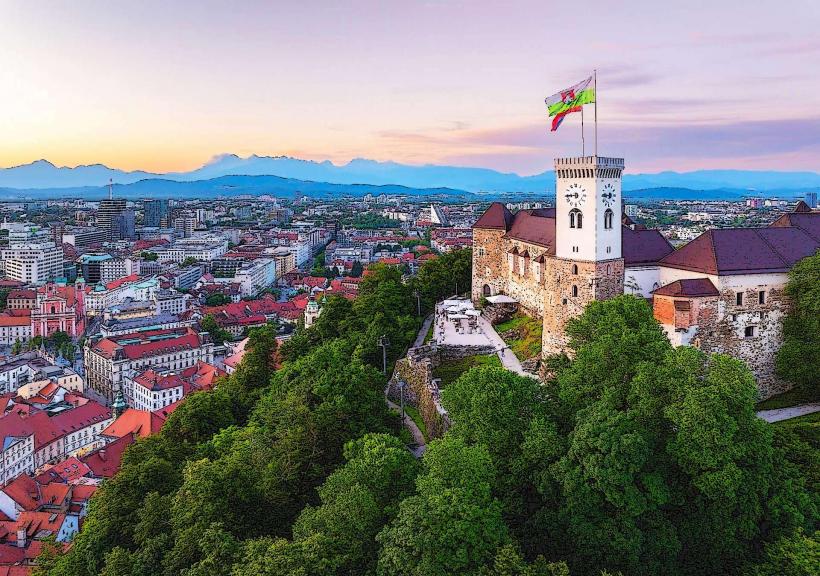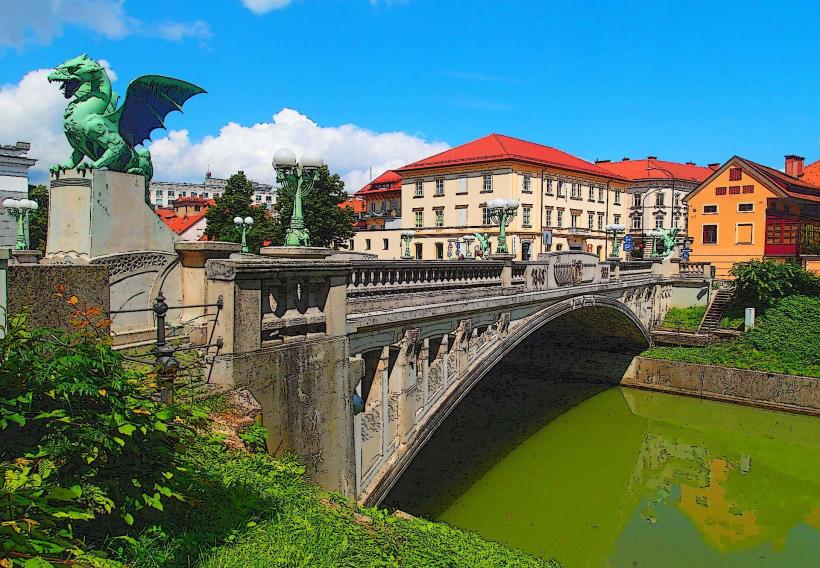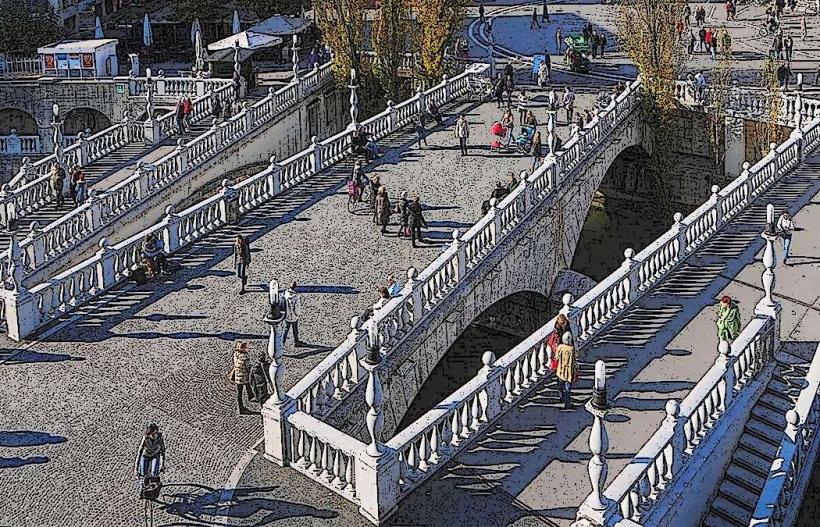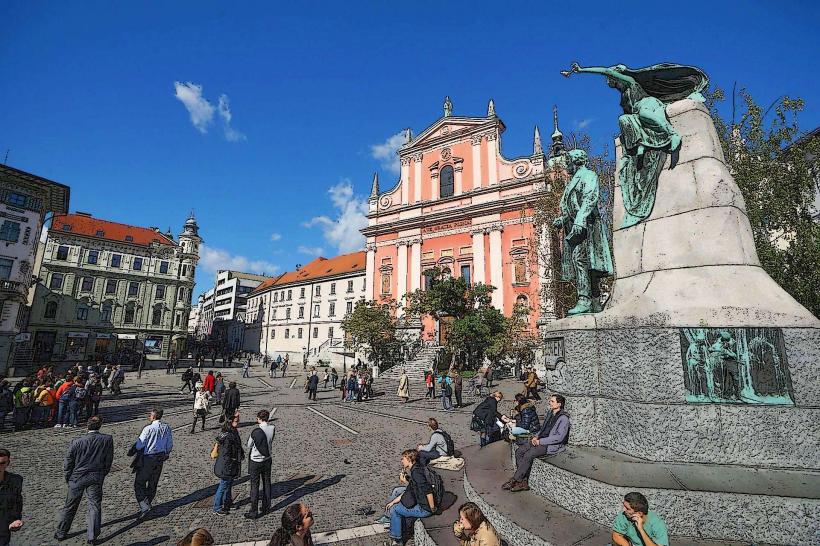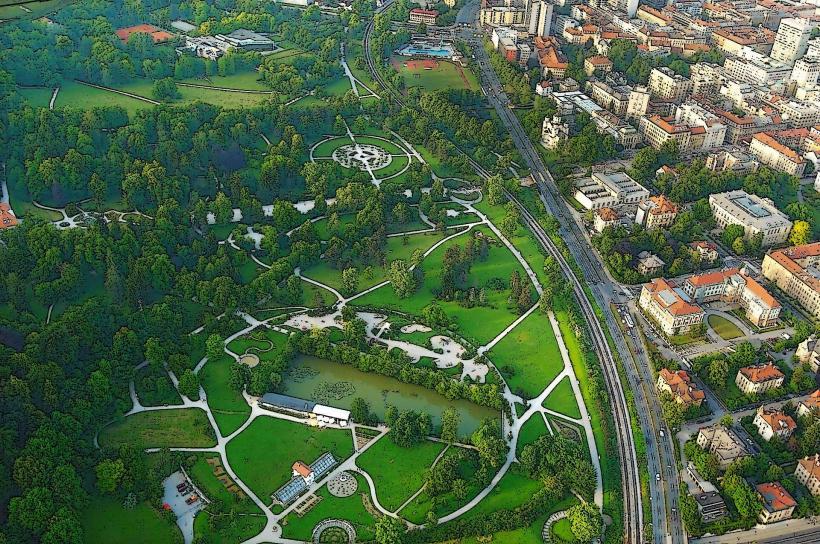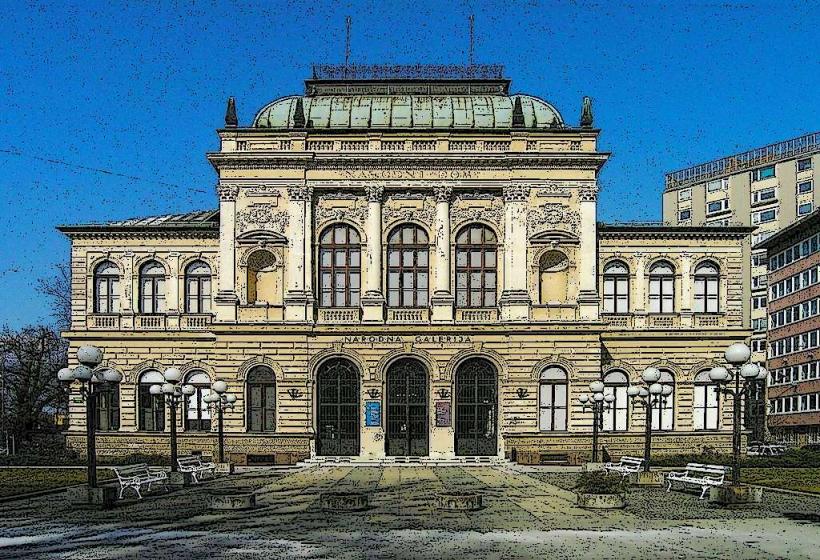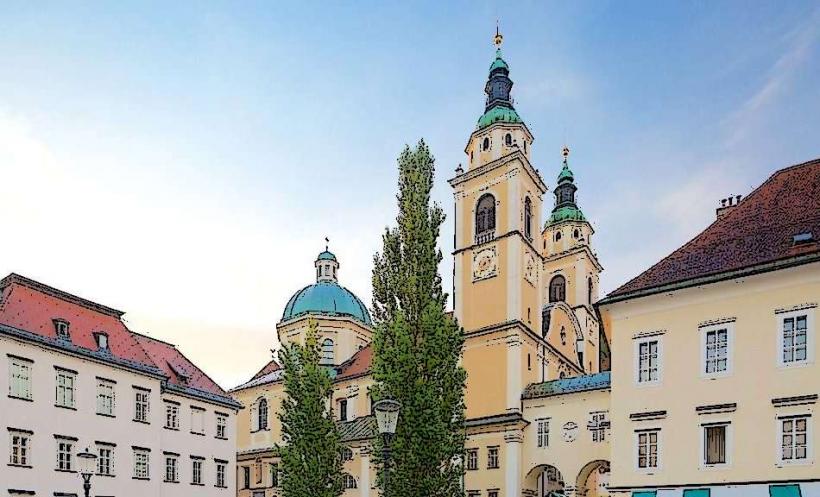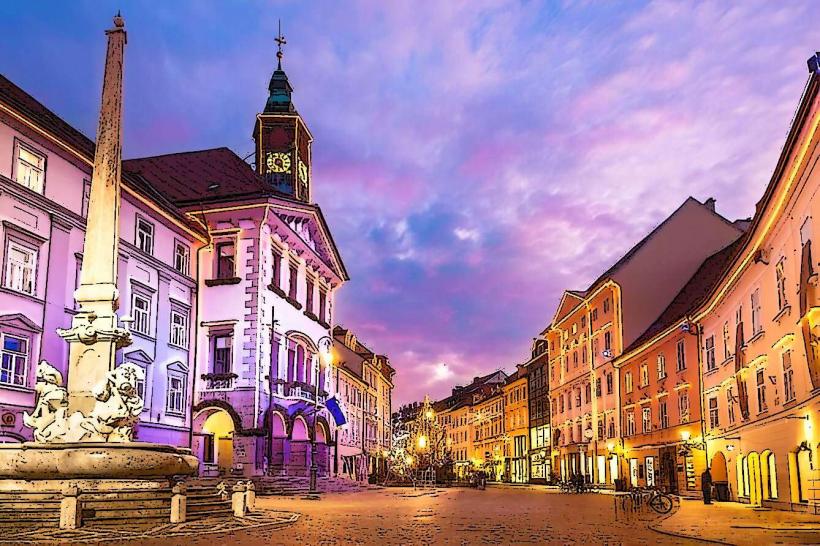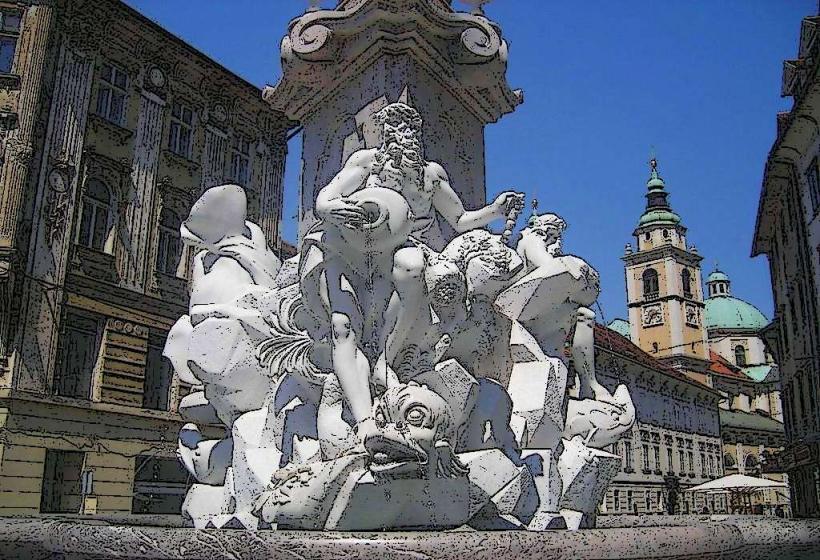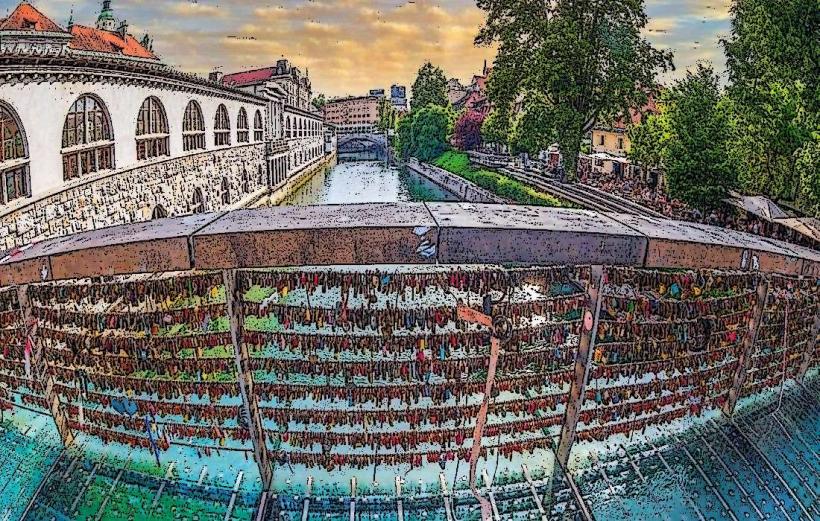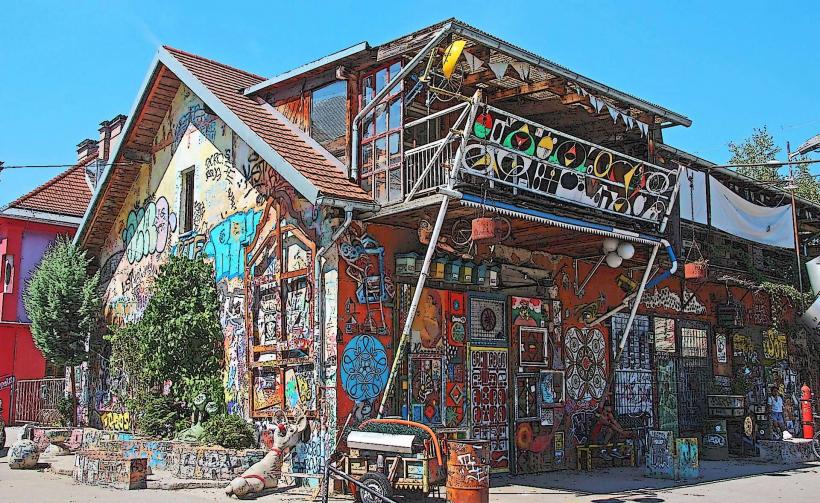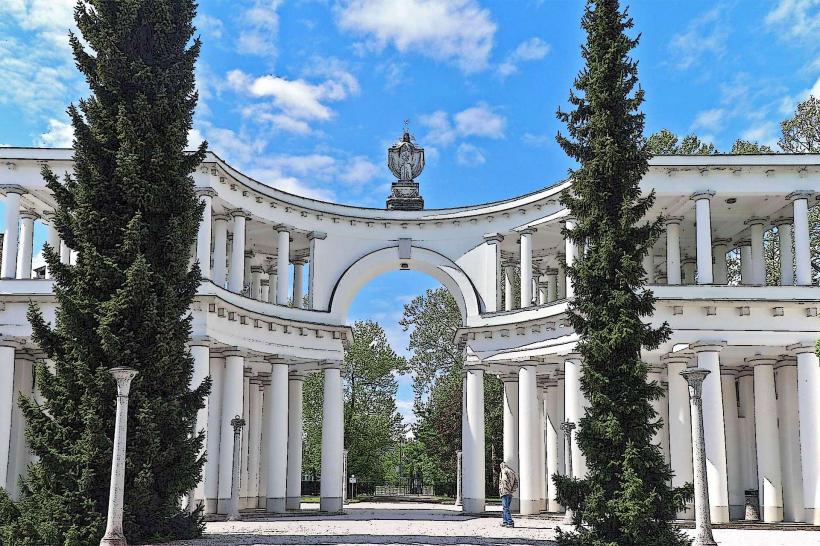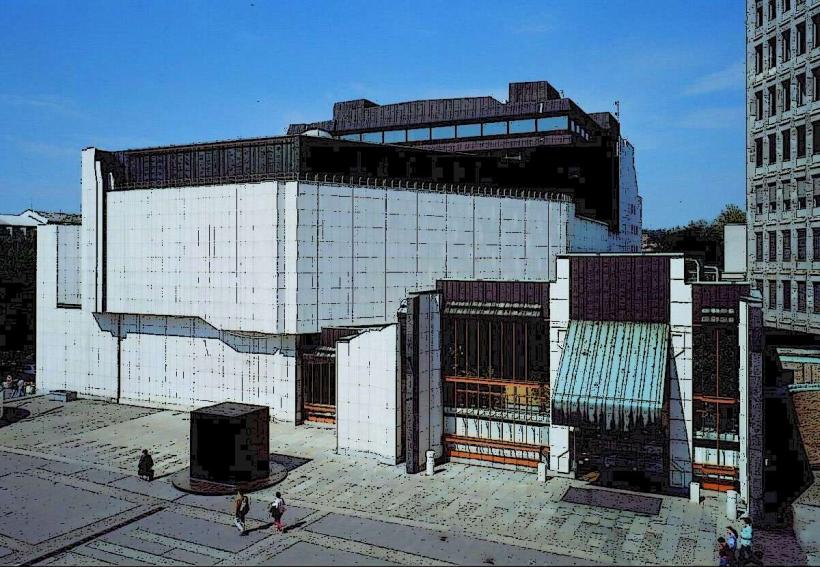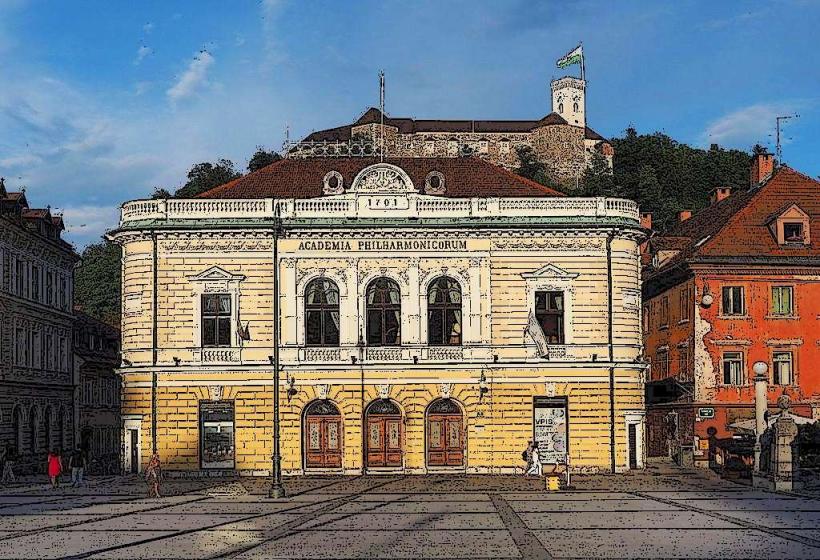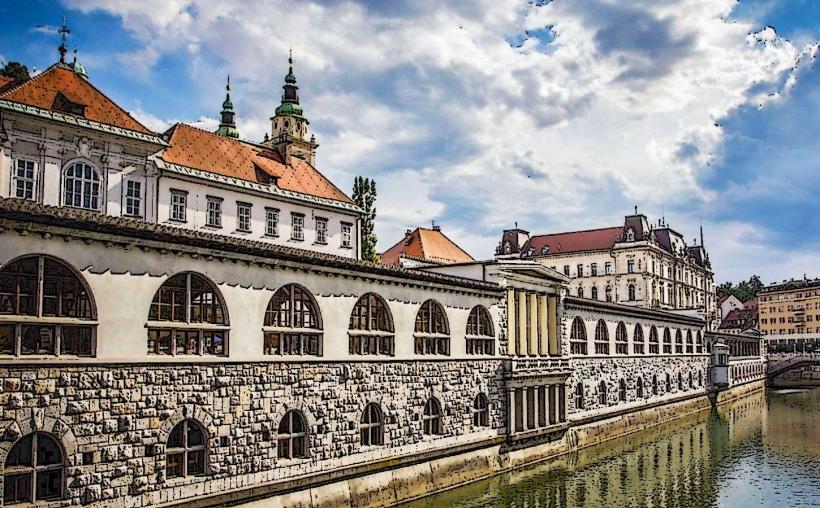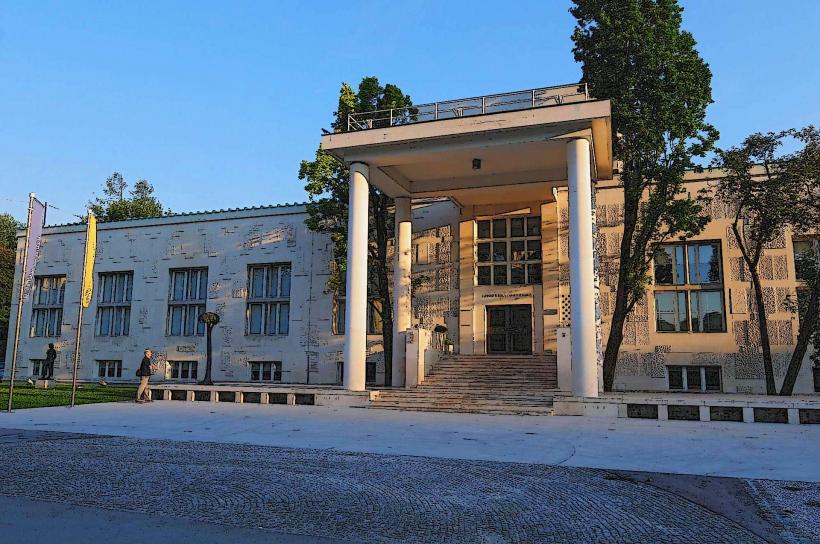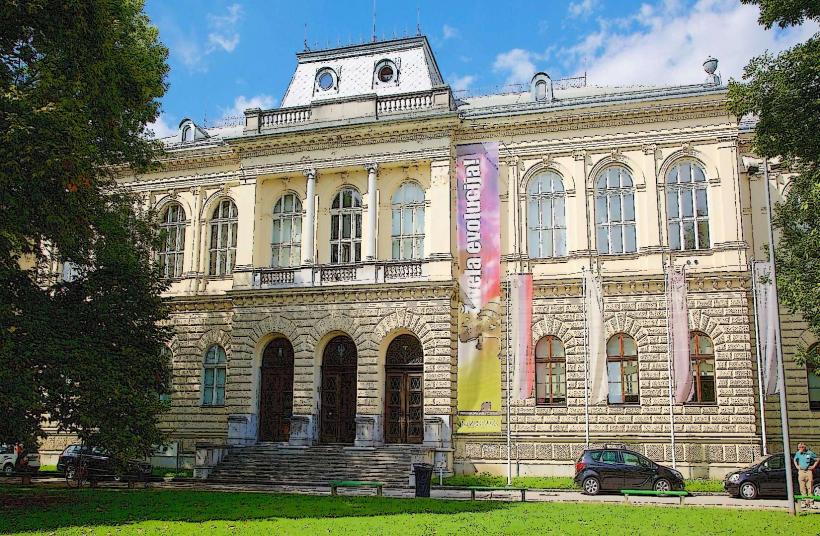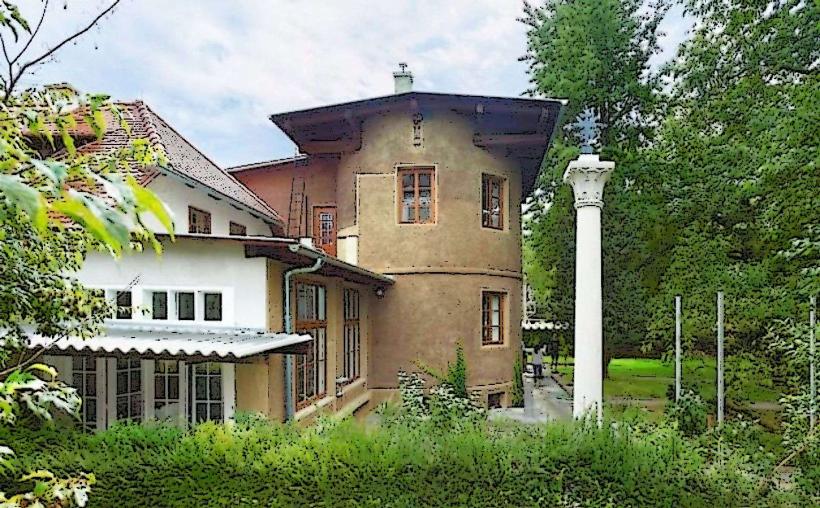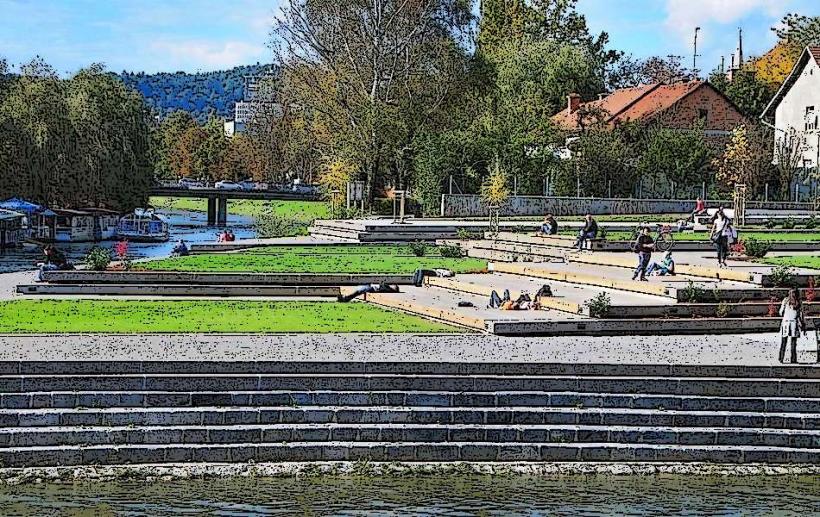Information
Landmark: Franciscan Church of the AnnunciationCity: Ljubljana
Country: Slovenia
Continent: Europe
The Franciscan Church of the Annunciation (Slovene: Frančiškanska cerkev Marijinega oznanjenja) is a prominent Baroque-style church located in the center of Ljubljana, Slovenia, near Prešeren Square. It is one of the most important religious buildings in the city and is known for its distinctive red façade, which makes it an easily recognizable landmark in Ljubljana.
General Overview
- Name: Franciscan Church of the Annunciation (Frančiškanska cerkev Marijinega oznanjenja)
- Location: Ljubljana, Slovenia, on Prešeren Square.
- Denomination: Roman Catholic.
- Architectural Style: Baroque.
- Consecration: The church was consecrated in 1660.
History and Background
Construction: The church was built between 1646 and 1660 by the Franciscan Order, one of the most significant religious communities in Europe. The church was designed to serve as the center of Franciscan spirituality and education in Ljubljana. It was built on the site of an earlier chapel dedicated to the Virgin Mary.
Foundation and Purpose: The Franciscan monks were invited to Ljubljana in the 13th century to establish a monastery and assist in the spiritual and educational needs of the city’s growing population. The construction of the Franciscan Church was part of the monks' broader efforts to serve the local Catholic community and promote religious education.
Baroque Influence: The church was constructed in the Baroque style, which was popular during the 17th century in Europe. The Baroque movement, characterized by dramatic and ornate designs, aimed to convey the grandeur and majesty of God. This is reflected in the church’s elegant design and elaborate interior decoration.
Architecture and Design
Exterior: The red façade of the church is one of its most distinctive features. The vibrant color is a rare sight in Ljubljana and makes the church stand out among the surrounding buildings. The façade is adorned with pilasters, columns, and ornate stucco work, showcasing the Baroque attention to detail.
Facade and Entrance: The main entrance of the church features an impressive portal with a relief sculpture of the Annunciation – the biblical event in which the Archangel Gabriel announces to the Virgin Mary that she will conceive the Son of God. This religious theme is central to the church's dedication.
Interior: Inside the church, the Baroque style continues with elaborate frescoes, stucco decorations, and altars. The church is decorated with works that emphasize the themes of the Annunciation and the Virgin Mary, in keeping with the church’s dedication. Frescoes on the ceiling depict scenes from the life of the Virgin Mary and other biblical themes.
Altar: The main altar is a beautiful example of Baroque artistry, featuring a depiction of the Annunciation, surrounded by golden details, sculptures, and intricate carvings. The altar is one of the most significant religious focal points in the church.
Organ: The church features a Baroque organ that is often used for liturgical purposes and is known for its rich sound. The organ’s pipes and case are elaborately decorated and add to the church’s ornate interior.
Key Features
Ceiling Frescoes: The ceiling of the church is decorated with frescoes painted by the renowned Slovenian artist Matevž Langus in the 19th century. These frescoes illustrate the Annunciation as well as scenes from the life of Christ and the Virgin Mary, contributing to the church’s spiritual atmosphere.
Altarpiece: The main altarpiece of the church is dedicated to the Annunciation, a central moment in Christianity. The artwork depicts the moment when the Archangel Gabriel informs the Virgin Mary that she will conceive the Son of God. The altarpiece is a testament to the Baroque period’s focus on grand, emotional religious imagery.
Sculptures and Decorations: The interior of the church is rich with sculptures, woodwork, and gold leaf, all of which are characteristic of the Baroque style. The side altars also feature sculptures dedicated to various saints and religious figures.
Significance
Religious Importance: As a Franciscan church, it is an important site for Catholic worship in Ljubljana. It serves as a place for both daily Mass and special religious celebrations, attracting both locals and visitors to its services.
Cultural Heritage: The Franciscan Church of the Annunciation is not only a place of worship but also a significant part of the cultural and architectural heritage of Ljubljana. The church stands as an example of the Baroque style and contributes to the rich religious and artistic traditions of Slovenia.
Tourist Attraction: With its striking exterior, beautiful interior, and historical significance, the church is a popular tourist destination. It is especially appreciated for its aesthetic beauty and the serene atmosphere it offers.
Visitor Experience
Accessibility: The church is located in the center of Ljubljana, making it easily accessible to visitors. It is situated just a short walk from Prešeren Square, one of the most iconic locations in the city. Visitors can explore the church and attend Mass or simply enjoy the beauty of its architecture.
Mass and Services: The church holds regular Mass services, including special services on religious holidays. It is an important place for the local Catholic community and often hosts pilgrims and worshipers from around the world.
Art and Architecture Tours: Visitors interested in religious art and Baroque architecture can include the church in a walking tour of Ljubljana’s historical and cultural landmarks. The Franciscan Church is often included in guided tours that focus on the city's rich religious heritage.
Conclusion
The Franciscan Church of the Annunciation is an outstanding example of Baroque architecture and is a key religious and cultural site in Ljubljana. Its red façade, elaborate interior, and connection to the Franciscan Order make it a standout building in the city. Whether as a place of worship, a historical monument, or an architectural masterpiece, the church remains a significant symbol of the city’s spiritual and cultural life.

